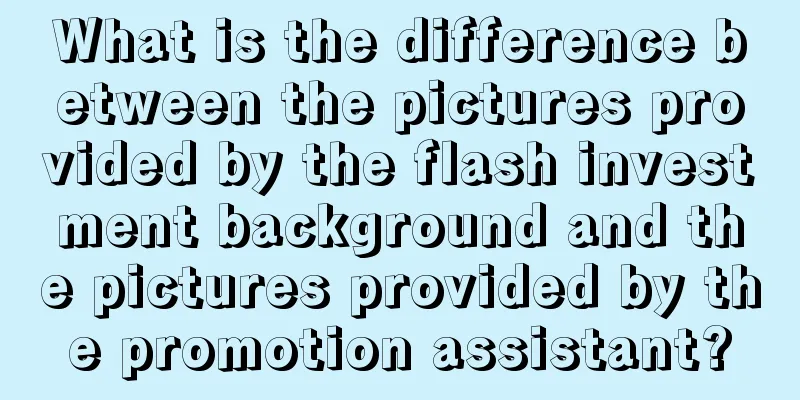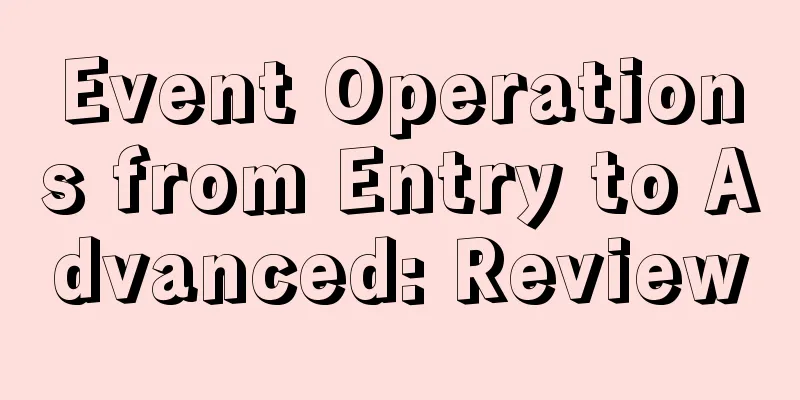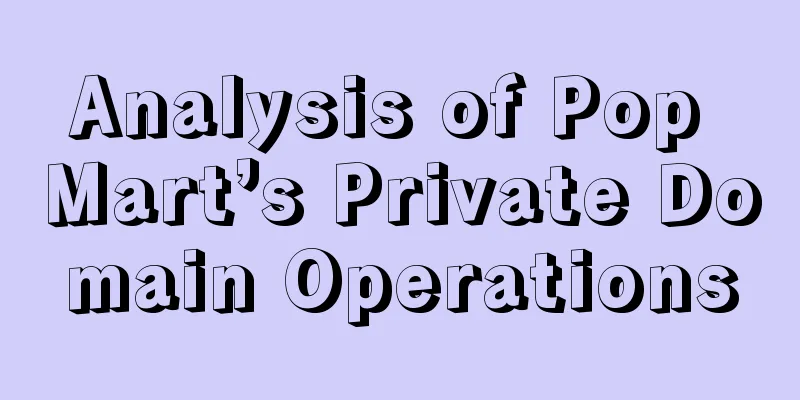Contribution | How to build a team operation system before the product goes online?
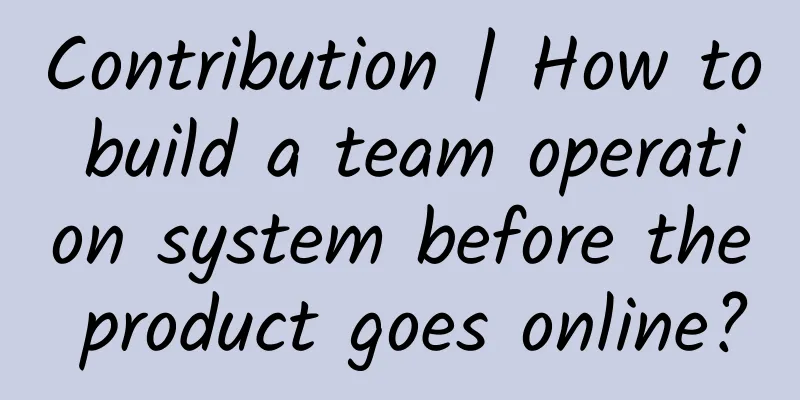
|
A friend found me through Zaixing to consult about product operation methods, so we sat together one afternoon to chat. During the discussion, I learned that the team was working on an anti-counterfeiting product, and the project was decided based on the discussion between the founder and the industry customers. The product will be launched soon, but the operation team has not yet started to be formed, so I came here to learn about the roles and assessment methods of operation-related personnel. At the beginning of the communication, I discovered a fatal problem of this team: the product will be launched soon, but there is no product positioning so far. So our conversation started with product positioning. Product positioning determines product success or failure Entrepreneur: My anti-counterfeiting products are made according to customer requirements. After confirming that they have clear needs, we don’t need to do product positioning anymore. Comment: Before developing any product, you should find the target users and carry out product positioning. The development of product functions must be confirmed based on user portraits, and the operation work also needs to be targeted and dynamically operated in stages based on product positioning. It can be said that product positioning is not only the starting point of product research and development, but also the prerequisite for carrying out operation work. There are a lot of anti-counterfeiting labels such as coatings. Although they are ordinary anti-counterfeiting, they can also meet the needs of ordinary people. Why do people use my anti-counterfeiting products? That is to say, what is the difference between my products and others. Therefore, we still need to dig deep into your products and what is the difference between me and these people. First, who is your target customer? You need to find a range in the market, and then sort out this range first. We call this the first step, which is the user direction. Who is he, who are these people? Although it is 2B, 2B also faces the problem of target customers. It is necessary to clarify which companies are your target customers. Second, your product positioning should be positioned in one sentence. It does not need to be very detailed, but it is necessary to be clear about what my product advocates and does not do. This is the most basic. You need to find the realization point of your own value. This not only involves your product, but also your operation should be based on these. Your product positioning needs to be refined, because the bigger you say, the more competitors you face. For example, there are many security products, such as bulletproof glass for cars and mobile phone antivirus software. These are all security products, and you definitely don’t want to compete with them. So you can’t say that you are anti-counterfeiting. You should focus on it and distinguish those people. That is, how to play your value in a special field. You must be different from those anti-counterfeiting labels that are painted on. In fact, you just need to play a different role. You can’t say more about what the same anti-counterfeiting label can do. You need to provide special product value above it. This is the positioning of your product. If your product and labels are indistinguishable, your own value is not highlighted. This will also affect your subsequent financing. These things must be very clear, otherwise it will be difficult for you to start in the early stage. For example, alcohol and tea, this type of customers has a characteristic that the value of a single product is relatively high, and the value of the product is difficult to define. These things have strong identity attributes, and they clearly explain their origins and history. This type of product can be promoted purely as a value, so we should focus more on the early stages of this type of product. What do these products have in common? It must not be about the corresponding functions of the product, but a service feature. When we drink, we don’t drink the alcohol or grapes inside, but an experience. The whole set of things from the wine bottle to the wine cap is a service. We accept an all-round experience, like history and allusions, which he can’t say, but it is a holistic experience, a feature. It is not like the size and mAh of a battery that basically determine the price of a battery. Ours is a feeling in the heart, a user experience. Based on this type, tea, wine, and other similar products are actually your (anti-counterfeiting products) potential market, which is your target user. This determines the first step, who to do it for when doing operations. The operation object does not refer to the whole, like the things in supermarkets and factories, but a specific category in supermarkets and factories. This category has high value, has its brand and the story behind it, so you know who to find for operation. You need to clearly define the user portrait, which may be such a large category, but you have to divide it. Customers have common roles. You only pick a few roles with the highest return on investment for yourself, and then do another screening. This will be very focused. One is that their needs are very strong, and the second is that your operating costs will be greatly reduced, and you will not spend money on those with weak needs. It is good for them to use ordinary scratch-offs, QR codes, etc. You will spend a lot of time to promote your products. You and him are just a buyer and seller relationship, and you will be very tired, because as soon as you mention this thing, he will talk to you about cost performance. To sell high-value things, Moutai is happy to spend another 1 yuan on anti-counterfeiting for 1,000 yuan, but not for 10 yuan wine. Then you will have your own characteristics, such as scratch cards. There is no information, no carrier, and no user acceptance channel. Your product has these things, which are dug out. Your users have urgent needs, and you will come to me if you have urgent needs. You want to buy. In this way, the essence of your operation will be invincible, and you will not rely on price competition. Starting from the Internet team and Internet products, not from product functions and technologies, there must be a wave of users, and you find their needs, so you make this product. This is all based on users. If you don’t find users, your product is limited to realizing the product, and you can’t carry out subsequent market promotion. Getting the target users and positioning the product is the first step in operations and product development. Going back to the product itself, starting from the beginning, you must start with product positioning. This will naturally block some people from competing with you, and then you will play the role of the most value-added part. In general, you only need to do the same as them in areas where they can do it. In areas where they can't do it, make sure they can never do it. This is my barrier. How to operate and promote 2B products? Entrepreneur: My anti-counterfeiting product only needs to consider the B-side, making companies willing to join my anti-counterfeiting products, so that my products can be promoted and operated smoothly. Comment: Only if you solve the pain points of your customers' users will your customers be willing to pay for your products. Your anti-counterfeiting product is actually a bridge between B2C. You are a middleman, not directly facing customers, but a tool and channel, intervening in the B-end. Your APP relies on the B-end to provide information, and you are also a platform, and the C-end gets information from your platform. Therefore, the portrait of the B-end determines the portrait of the C-end, because they are in a consumer relationship. Therefore, you need to consider not only the customers of the B-end, but also the customers of the B-end, that is, the C-end, because only by solving the problems of your customers' customers will the companies on the B-end be willing to join your products. After completing the user portrait, you can then find the right contact channel. Are your users in yacht clubs, golf clubs, or high-end thought clubs? This is high-end. If they are slightly mid-range, they are in Douban or WeChat groups. Find their receiving channels and then ask them about their needs. They occasionally buy red wine and install your APP to scan it. You have to give them a reason to make them willing to install it. At the beginning, it is easy to fall into a vicious cycle of BC. C says that you have too few products and are unwilling to use them, and B says that you have too few users and are unwilling to use them. Therefore, when your product is cold started (neither the B end nor the C end is enthusiastic), you must vigorously promote one end, otherwise it will decay downward. When operating, you should first move this curve to the upward channel. When pushing one end, whether you go to the B end or the C end is a matter of your strategic choice. The B end is actually doing content operations, and the C end is actually user operations. Both sides need to be grasped, but the strategies on both sides are completely different, so your operations staff must be divided into two parts. B-side operators must dig out corporate users, tell them that your product has added value, and let them join. C-side operators must solve their usage frequency problem. It is not just about buying wine, but adding demand to your product. For example, when everyone buys the same wine, you can provide background data operations. For example, when scanning the wine again, you can also scan the users of the product. The scanning is not the product, but a social tool, so it is not just a few times a year. So our products should be more open, don't just look at what you can provide. This is the hammer thinking. You will only hit it when you see the nail. You must open your mind and try to make the B ring more round. You can iterate on the product side. You can first do the basic functions well, then find the secondary functions, and then the secondary functions. You can stack each work. After your product is launched, your R&D should continue to superimpose user needs into your 2.0 and 3.0 versions of the product based on the feedback from the C-side. How to build an operations team from scratch? Entrepreneur: My product is ready and will be launched soon. How should I build my team? Comment: Product and operation are organically integrated and cannot be divided into two stages artificially. The operation role should be introduced when establishing a team. There is a method of entrepreneurship called lean entrepreneurship. It does not mean that I will wait and see what the customers are like after I make the product, because it is possible that you have already invested a lot of money when you make it, and one or two words from the customers may be a challenge to your direction, which may cost you a lot. A better way is to cut the product into pieces, not to finish a dish. First, find some customers to try it out when you are prototyping, and then go to the first version, the second version, and the third version, and slowly let the customers participate in the product development process itself. The product produced in this way is not made behind closed doors, and it also meets the needs of customers. Therefore, we should face the target users as much as possible and listen to their feedback, but we must also distinguish between real information and false information. When we operate products around users, if we are really lucky, there is a factor of luck in many cases. It happens that the demand we put forward is a real demand. Maybe the demand raised by several old friends happens to hit this market, and it works, because this demand happens to be a real demand. But most of the cases are not like this, and he may even lose some undiscovered markets. In terms of team building, in addition to B-side content operations and C-side user operations, you also need to do event operations, and your product requires a lot of activities. These are the three sections of operations. The core is to be active, and the others are stimulations for activity. If you are a full-featured team, you do all the operations yourself, usually BD (business development), business channel expansion. You also need customer service staff, divided into VIP seats for major customers and general customer service. The major customers on the B side of your product are all VIP customer service seats, and the C-side are all general customer service, solving small problems such as user login. There are also planners, who are responsible for the content and stories behind the product, and this forms your operation team, so you can look for them according to these roles. Operational coordination is divided into two parts. The first is automated operation, which is to configure everything with processes, mechanisms or automated tools. For example, the regular Spring Festival, May Day, and National Day are all done automatically. The other is sudden events, such as screen-sweeping events (hot news, etc.), which require a temporary combat team and a person to coordinate. You need to find a leader in this planning. In addition to daily automated operations, this kind of work of catching hot spots is often very important. We often just brush the screen, but for promotion, these are particularly good business opportunities that should not be missed. Planning is also divided into two groups of people in terms of execution. One group is the classic team, who are free in event planning, quality, and risk control. The other group can be signed or outsourced in the form of execution. As long as they have done event planning, they are generally competent. This is a configuration of the operation team, which can be configured according to this role. #p# How should entrepreneurial teams be evaluated? Entrepreneurs: Why do core talents like R&D managers never negotiate with me and just walk away when they can’t do something? How should a startup like us conduct assessments? Comment: Many people now practice a ruthless strategy. When they can do the work you ask for, they will try their best to do it. Once you cross their bottom line, they will distrust you and will not negotiate with you, but choose to leave directly. We divide the assessment into attitude and ability assessment and performance assessment. These two aspects need to be viewed separately, because operations are different from sales. Sales are short-term performance, while operations are long-term, and more importantly, attitude issues. Operations are repetitive and deal with problems day after day. You need to be down-to-earth, and attitude is very important. Any experienced operator will not promise you any KPI, and he will definitely arrange operational resources according to the product operation cycle. For example, when a product is just launched on the market, it needs to have an initial ramp-up to accumulate. The initial risks come from a large amount of user feedback, and there will be a lot of negative information. Operations need to collect this information to improve the product, rather than launching a large number of products at once. Therefore, the more products the better in the early stage. In the early stage, 2,000 users may be enough. Among them, 5% of users will continue to use your product. In the later ramp-up period, they will follow you and finally become your core users. Your product mainly relies on these core users to increase the number of users. When the number of users reaches a certain amount, your product enters the platform period, and the focus becomes user maintenance. Therefore, the focus of the assessment cannot be simply performance. The proportion of performance should be lower in the initial stage and slightly higher in the plateau period, but should not exceed 50% at most, because once it reaches 50%, it becomes a sales team. The appraisal system is divided into four levels: SABC, with C being the worst level. A system of elimination should be implemented. Appraisals are conducted every three or six months, and those who get C twice in a row will be eliminated. This should provide the company with a correct orientation. This is also a performance appraisal system for operating personnel, but it is not a KPI, but Performance, which is presented as a whole. The assessment is divided into three levels: assessment by superiors, assessment at the same level (to avoid shirking responsibility), and assessment by subordinates (whether they can lead a team). After the assessment is completed, there should be an improvement plan for each level of ABC, either reading or training. After the current assessment is completed, the next assessment target should be formulated based on the assessment results. This 360-degree assessment is very beneficial. The first is that all employees participate in management. This is particularly attractive for Internet teams. It is not that only the leader has the final say. The second is information symmetry. Everyone knows what the situation of others is. If it is C, others also know it. He will have a particularly large hidden pressure and have the motivation to move forward. The third is to reduce the proportion of decisions made by superiors. Now people born in the 1990s and 1985s are particularly pursuing individuality, which is the biggest release for the team. For start-up teams, the assessment should be fast. The assessment should be conducted once every three months and should not exceed one week. The assessment should be conducted once every six months and should not exceed two weeks. There should be assessment training, using the time at night or on weekends. There will be self-evaluation in the assessment, but its weight should be less than 10%, which can avoid cleverness and allow everyone to have an attitude. In addition, the assessment must be open and transparent to avoid people thinking that it is a shady operation. Everyone should follow the rules from the beginning so that they will take the assessment seriously. Otherwise, many clever tricks will appear. What qualities should an operations manager possess? Entrepreneur: Who is suitable to be my operations manager? What qualities should he have? Comment: The operation team is very important in a full-function small team, and the operation manager needs to have the ability to handle problems in a structured manner. The operations manager contacts both customers and users, so the operations manager's understanding of the situation must be comprehensive, true, and effective. There is definitely a gap between the actual and expected products. He must be able to find the conflict between what users want and the product. He must not stick to reality and must raise it to a higher level than your reality. The gap between reality and expectations is a lot of problems. The operations manager must be able to quickly locate this problem, which is actually to understand what the expectations of the product are, and then make a plan, which things should be done by content operations, which things should be done by user operations, or should we say that we should attract interaction. The plan must be fast, cheap, and valuable. When the operations manager gives you a plan, you should evaluate him from these three points. The other is execution. If it is your own team landing, you must grasp every detail. If it is outsourced, you must find the person who executes it and do the activity again. When we usually do activity operations, we do it in a grayscale way. He should come up with two plans, AB. If I want to attract 50,000 users, I have two plans. The first is to recursively recommend it to large supermarkets, and the second is to find a fixed group of people. After the two plans come out, you can first find two groups of people to try these two plans. If Plan A is better than Plan B in the sample of 100 people, then Plan B will be eliminated and Plan A will be adopted. In fact, the quality of the plan can be seen from these 100 people. After Plan A is done with 100 people, the next step is 1,000 people. In this way, the entire operation is a visual and controllable process. Everyone can see these data, and they can be used as a basis for later assessments. Another is risk control. During the execution process, there will be a large number of emergencies. Whether a person has experience in executing the plan depends on his risk control ability. There is also a derivative problem. For example, a user uses your product and causes losses, and when you compensate him, you incur losses again. This must be avoided. Do not use another mistake to make up for the previous mistake. This phenomenon must be prevented when there are a large number of users. Extra A unique way to operate Internet products: gamification operation Internet product drivers are divided into three categories: ► Product-driven. For example, WeChat itself fits the user’s usage habits. Even without promotion, it can spread through word of mouth. ► Resource-driven, for example, Didi Chuxing’s first product was very bad, but they poured money into it and adopted a large-investment model, which is actually not suitable for entrepreneurs like us. ► Operation-driven. Most normal products adopt this approach, and a large number of products also die here. Gamification operation can help you find the sense of operation, which is very important for product operation. If the product can grasp the characteristics of the game, it will definitely add points. What is gamification operation? ► First, clarify the business goals, that is, what you want to do in the early stage, and break it down into indicators. Don't operate for the sake of operation. In terms of indicators, the indicator system is generally constructed like this, with two parts: user indicators and revenue indicators. User indicators include registration, installation, and online, etc. Registration is divided into the next day, two days, four days, and seven days, etc. Installation also has these, and online includes PC, mobile phone, etc. Revenue includes recharge, consumption, and activity. Recharge means that your product may have some prepaid fees, so there will be recharge data in it, including daily recharge, next day recharge, monthly recharge, etc. Consumption is how much money he spent in it, including daily consumption, etc. Daily recharge income divided by the number of daily active users is daily recharge activity, and monthly recharge income divided by the number of monthly active users is monthly recharge activity. By analogy, there are also daily sales activity and monthly sales activity. There is also the recharge-sales penetration rate, which is what the ratio of these two is. Is the consumption very large, but there is no recharge, the recharge pull is too weak, and there is only recharge but no sales, and consumption is not attractive. There are a lot of details in the indicators, which I will not talk about. These are for your daily user monitoring and to increase the value of your business. You need to look at the data to know which part needs improvement. For example, if the recharge success rate is too low, there may be a problem in your recharge process. The third function is to break down these indicators so that you can set your operational indicators. The operational indicators must be based on these data. If there are only 10 or so people using it at the beginning of the operation, there must be a problem with the new users. Then 80% of the first activity of the operation is to attract new users and try it out. Therefore, the data indicators must be done well so that the business can be monitored. With the business goals in mind, look back at your user portraits to find out who the first wave of fans are. ► Second, user portraits. IUI Internet user insight methodology proposes: Do you really understand your users? Many entrepreneurs know their products very well. I will experience every updated version, spend more than 10 hours a day experiencing the product, and put forward 80% of the improvement suggestions for the product..., but this state has a particularly big hidden worry: you are not the target user of the product, and the time you spend experiencing the product may not be a real experience. So instead of spending a lot of energy to build a car behind closed doors, it is better to focus on your target users and give feedback on their real experience. Who is your target user? It is a white-collar worker with an income of about 8,000, in a first-tier city, and online for a few hours a day. Give a complete user definition. Then reach users through the background to feedback user needs. Such product operations are not done blindly, but to grasp the precise target users, do grayscale, release the volume many times, and give continuous feedback, so as to make targeted adjustments to the product. ►Third, formulate interesting game rules. How to make them interesting is still up to your operations staff to come up with. For example, Didi Taxi did have an effect in the early stage of sending red envelopes. This is an effective red envelope interaction rule. You can see when your money arrives and who has received your red envelope. However, operational activities must be divided into cycles. Now basically no one receives red envelopes, so you must create interesting game rules. They are useful in the early stage, but may change in the later stage. You need operations managers and operations planners to think about what to do and set interesting rules. ► Fourth, beyond participation and instant feedback, we must provide good services to users, such as increasing activity by logging in. This is a toolbox for gamification operations, called Bpl, where B is the points that everyone has, and p is personal achievements, such as platinum users. We need to make some people feel superior in order to attract others. l is the list, whether it is a score list or an activity list, we build whatever list we want. In fact, it creates a feeling of everyone working together to make a product. Therefore, operation is first of all a matter of conscience, and it must be a matter of personal conscience. Secondly, it is a matter of experience. You must not use very strict data to evaluate it, but combine it with reality. Maybe it is very good in Nanshan, but there are problems in Futian. Don't just say it is a waste, because it may be good again next time in Guannei. So it is a matter of experience. Operational management: How to motivate a small entrepreneurial team? Operations also need incentives. The common incentives for small entrepreneurial teams are, first, psychological recognition, the boss's participation, and a small celebration for each small node or milestone, so that everyone feels that they are making progress every time. Don't wait until a big milestone to celebrate, otherwise it will be very depressing. Don't wait until a big milestone to have a big celebration. The second is not to make empty promises, don't say empty things, which will lead to the loss of your loyal employees and core backbones. In fact, the team is a question of leadership, which is how to unite the people around you around your aura. In a flat entrepreneurial team, leadership is a relationship, it is dynamic. Maybe he is an expert in this industry, or I am stronger in other aspects. So when we form an operation team, I am the leader. It is a mutual relationship, it is fluid, so don't overemphasize the leadership position at this time. This article is contributed by readers and does not represent the views of 51CTO. |
<<: Entrepreneurs, you may just be a house in the Third Ring Road in the eyes of investors
>>: Java Reflection Best Practices
Recommend
In her two years at Tencent, she learned these 15 content management tips
Two years ago, I graduated with a master's de...
Tips for effective advertising!
Everyone who has used competitive advertising kno...
How far is ASM from AI?
According to many predictions, Apple's search...
Apple's new patent: Apple Ring can control smart home through gestures
Apple has reportedly released a new patent that s...
Is the country's first "online ID card" safe enough? ID card copies may be abolished
Zhang was on a business trip to another city. Whe...
Fenghuo Cross-border Product Director Training Camp, industry leaders jointly develop and solve industry bottlenecks
Fenghuo Cross-border Product Director Training Ca...
Live broadcast design for 1 yuan trial class to paid group
There are endless online education courses on the...
WeChat Development Access Guide
Overview To access the WeChat public platform for...
By mastering these points, you can also plan an event that will sweep your circle of friends!
All of you in the Internet industry should be awa...
What else can you offer to attract developers besides high salaries and beautiful girls?
[[123741]] During the dot-com bubble of the 1990s...
The EU requires all mobile phones to have a unified charging port. What does this mean for Apple?
Despite Apple's obstruction, the European Par...
Dialogue with Robin Li: When we are at the intersection of the times
[[127002]] Three elements for Baidu's success...
The efficacy, effects and taboos of dog meat
Dog meat is also known as fragrant meat, local sh...
12 must-have formulas for planners in 2020
Introduction丨Writing a proposal can be fun in thi...
Six major trends in video marketing!
Video content is experiencing unprecedented growt...


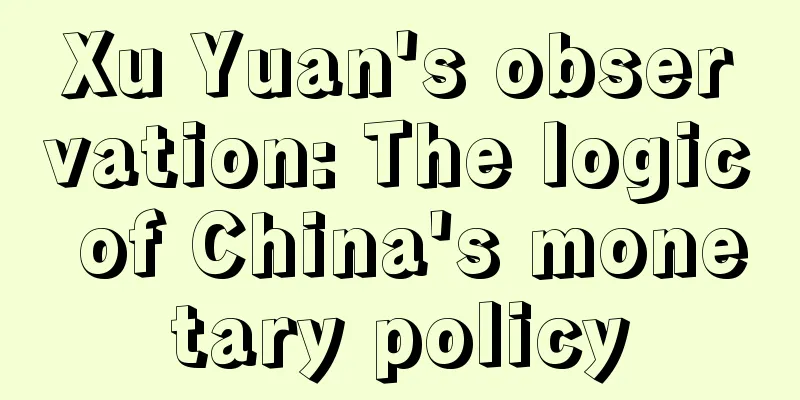
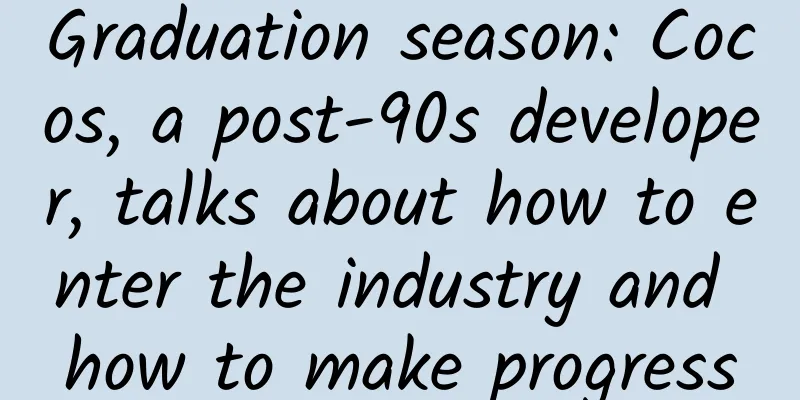

![[Case] 17 pictures to understand the functional development and analysis of Meituan.com’s campus channel structure!](/upload/images/67cc40aa713ca.webp)
